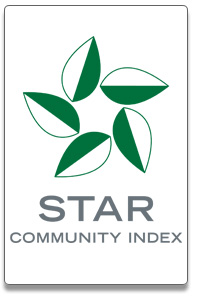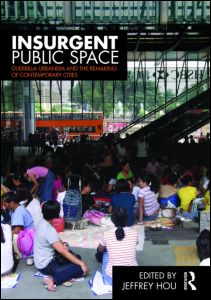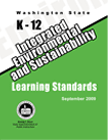On my recent visit to Seattle (prolonged by nine days thanks to Icelandic geology) I caught up with some of the interesting work of colleagues there working along the spectrum of sustainable design.
rating sustainable communities
First was the STAR Community Index program, an effort to “transform the way local governments set priorities and implement policies and practices to improve their sustainability performance. It will become the definitive means by which local governments measure and ‘certify’ their achievements.” Taking many of its cues from the US Green Building Council’s LEED rating system, the STAR rating system aims for transformation by means of a national, consensus based system.

a partnership between ICLEI-Local Governments for Sustainability USA, the U.S. Green Building Council (USGBC) and the Center for American Progress (CAP)
In order to work out a national level system, the STAR group has already produced an interesting report “A Comparative Analysis of Sustainable Community Frameworks” (download here) which looks at the diversity of sustainability rating systems from across the US. The report is useful in that it profiles a wide range of ratings approaches, from individual products to buildings to whole cities. It also discusses frameworks such as ecological footprint or genuine progress indicator.
Since ‘rating system’ is a common activist tactic among designers, this report makes for an interesting and thought-provoking read.
design activism from academia
The University of Washington (based in Seattle) may have been one of the first universities in the US to offer a course on design activism, thanks to associate professor Jeff Hou. Hou is currently the chair of the Landscape Architecture department, which maintains a webpage on the subject of design activism that profiles a range of the department’s urban ecological design projects that could be characterized as activist, such as humanitarian aid and urban revitalization.
More recently Hou has edited a book, Insurgent Public Space: Guerrilla Urbanism and the Remaking of Contemporary Cities (published by Routledge, 2010) which explicitly highlights activist notions of the making of public spaces.

sustainable design in schools
Finally I met up with Gilda Wheeler, the program manager for sustainability and science in public education for Washington state. Wheeler’s group is pioneering education for sustainability in Kindergarten through twelfth grade (K-12) and they’ve developed some great material. The highlight is their recent “Integrated Environment and Sustainability Learning Standards” (downloadable) which describe what students must know in the area of environment and sustainability. But rather than add a new layer of curriculum or coursework, the standards describe how the learning can be woven into existing curriculum activities. For example, the document describes how knowledge of “interdependency” can be drawn out in the existing science and social studies curriculum — on a grade by grade level (e.g. 2nd-3rd grade or 9th-12th grade).

This standard is particularly good to see, since in my experience one problem we encounter in teaching sustainable design at college level is that students are still entering college with little coherent knowledge of what sustainability means. It seems that Washington may be the only state with this type of learning standard, so let me know if there are others, or encourage their adoption if there aren’t.
Wheeler’s group has also developed a “sustainable design project” that any teacher can use and adapt to their own K-12 needs. There is a teacher manual available and the goal of the project is to “bring industry, business, and higher education partners together with K-12 classrooms to design sustainable solutions to real world challenges.” The website has a video from one of the sustainable design projects that has already been done, as well as the teacher manual and the conceptual plan for the project.